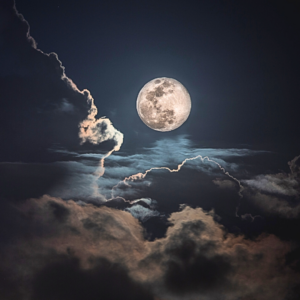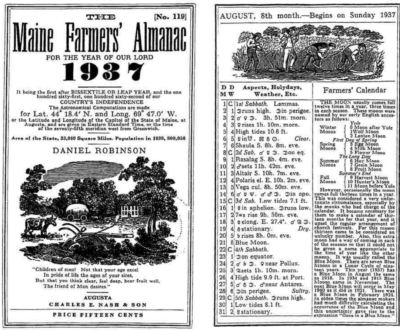On the thirtieth of this month, we will be treated to our second Full Moon in August.
When a second Full Moon happens in a calendar month we call it a Blue Moon. This is known as a monthly Blue Moon. There are also seasonal Blue Moons. A seasonal Blue Moon is the third Moon in a season that happens to have four Full Moons instead of the usual three…bear with me.
 There are slightly more than 12 Full Moons in a year because the Moon takes some 29.5 days to orbit the Earth, a little less than the number of days in most months. Think of it as the Moon moving a little faster than the months and lapping the calendar every so often. On average one type of Blue Moon or the other occurs about every 2-3 years.
There are slightly more than 12 Full Moons in a year because the Moon takes some 29.5 days to orbit the Earth, a little less than the number of days in most months. Think of it as the Moon moving a little faster than the months and lapping the calendar every so often. On average one type of Blue Moon or the other occurs about every 2-3 years.
Coincidentally, both of this month’s Full Moons are also Super Moons. This means they are at a point in their elliptical orbit where they are closest to Earth.
So, on August 30, 2023, at 9:35 pm EDT the Earth, Sun, and Moon will precisely line up to make a Super Monthly Blue Moon. Those of us in the East are in a near-perfect position to enjoy the show to its fullest. In Media the moon will rise in the east at 7:49 pm and, if you get up early enough, you can watch the moon set in the west at 6:54 the next morning.
Is It Really Blue?
Will our Super Blue Moon look larger than usual? The answer is yes…sort of. A Super Moon averages about 7% larger but that can be hard to discern. Whether you can tell the difference or not, the sight of the Moon, especially if it’s close to the horizon and the weather cooperates, is guaranteed to be super. But…it’s very unlikely to be blue.
The Moon does sometimes look blue but it has nothing to do with extra moons in a year. Volcanic ash is the most common culprit. The Moon is said to have appeared blue for two years following the 1883 eruption of Krakatoa in Indonesia.
The use of Blue Moon to describe a rare event may date back to the 1600s or further but its true origins are uncertain. It is also not known when the Blue Moon idiom came to refer to an extra Full Moon in a year but it likely involves monks and Ecclesiastical calendars. I will spare you the details and controversies over these histories but for a good summary of the entire subject, I refer you to this Wikipedia article and the links about Blue Moon in TimeandDate.com.
Why are there two types of Blue Moons? Blame an error in a magazine article, the board game Trivial Pursuit, and the Star Date radio program.
In 1937 the Maine Farmer’s Almanac began publishing a calendar, called a “tropical” calendar. Each year began and ended with the December Solstice. The seasons changed with each subsequent equinox or solstice. Each season had three Full Moons with a unique name except when a fourth Full Moon inserted itself. The Almanac called this extra moon a Blue Moon. These are the seasonal Blue Moons and all was well until a misinterpretation brought us the monthly Blue Moon.
Enter James Hugh Pruett (1886-1955) an amateur astronomer who in 1946, published an article attempting to explain Blue Moons in Sky and Telescope magazine. Pruett misinterpreted the definition in the Maine Farmer’s Almanac and defined a Blue Moon as the second Full Moon within the same month, hence a monthly Blue Moon. This sounds similar to the seasonal Blue Moon but it’s not. In fact, a seasonal Blue Moon can be the only Full Moon of the month. The Full Moon on August 19, 2024 will be the usual Sturgeon Moon but also a seasonal Blue Moon. Monthly Blue Moons occur slightly more often than seasonal Blue Moons.
 Pruett’s mistaken definition caught on and is now the more popular of the two thanks in no small part to it being published as a question in the 1986 version of the Trivial Pursuit board game as well as being disseminated on the popular radio program Star Date. Both definitions are currently used.
Pruett’s mistaken definition caught on and is now the more popular of the two thanks in no small part to it being published as a question in the 1986 version of the Trivial Pursuit board game as well as being disseminated on the popular radio program Star Date. Both definitions are currently used.
The seasonal Blue Moon is historically more accurate but it seems the monthly Blue Moon is here to stay so why not celebrate the oddity of both? Enjoy the show!








